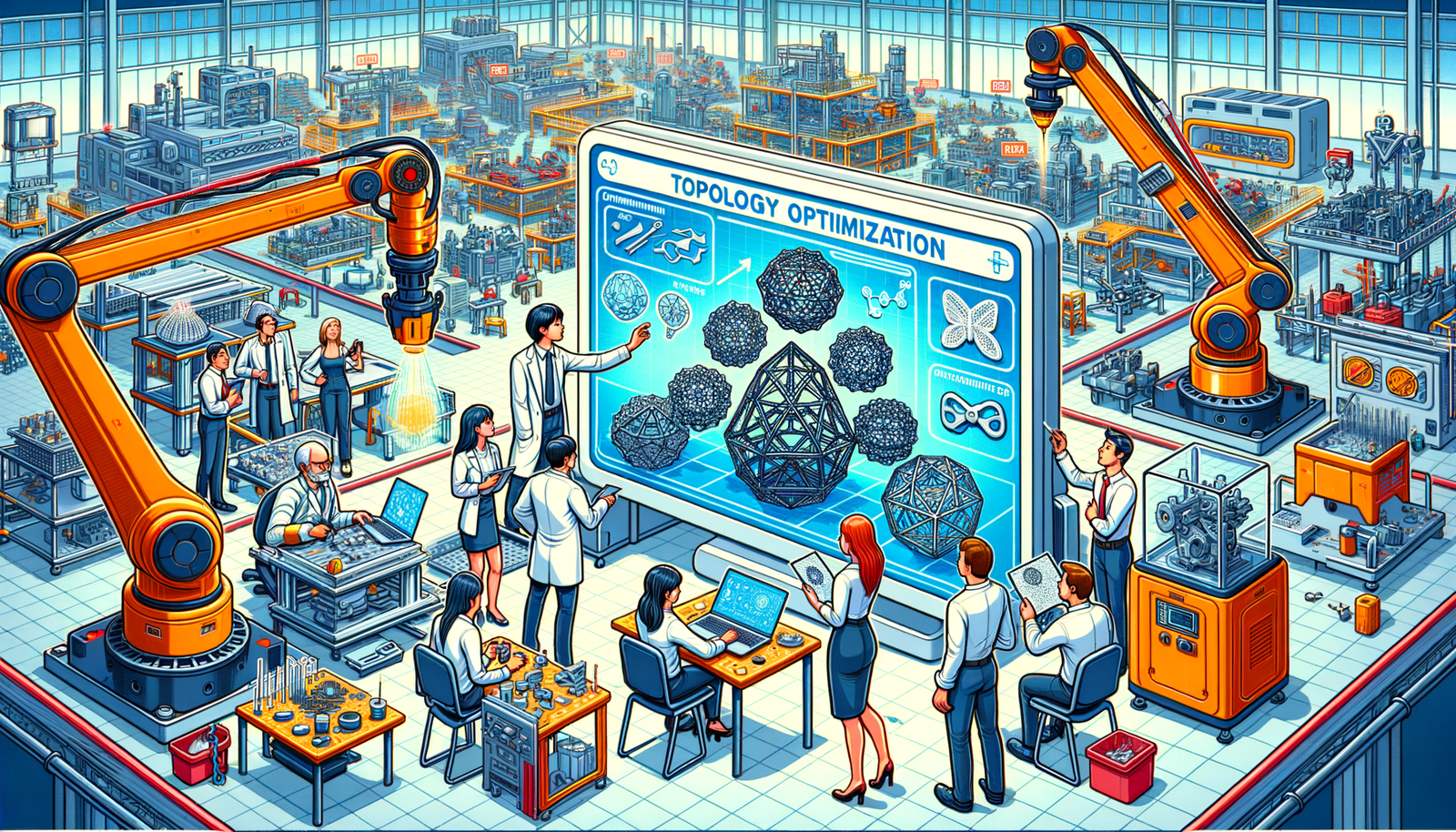Your Cart is Empty
Customer Testimonials
-
"Great customer service. The folks at Novedge were super helpful in navigating a somewhat complicated order including software upgrades and serial numbers in various stages of inactivity. They were friendly and helpful throughout the process.."
Ruben Ruckmark
"Quick & very helpful. We have been using Novedge for years and are very happy with their quick service when we need to make a purchase and excellent support resolving any issues."
Will Woodson
"Scott is the best. He reminds me about subscriptions dates, guides me in the correct direction for updates. He always responds promptly to me. He is literally the reason I continue to work with Novedge and will do so in the future."
Edward Mchugh
"Calvin Lok is “the man”. After my purchase of Sketchup 2021, he called me and provided step-by-step instructions to ease me through difficulties I was having with the setup of my new software."
Mike Borzage
Exploring the Future of Design: Topology Optimization and Its Role in Advanced Engineering and Manufacturing
August 16, 2024 3 min read


Introduction to Topology Optimization
Topology optimization is a cutting-edge design approach that focuses on optimizing material distribution within a given design space, under specific constraints and loads, to achieve the best possible performance. Its roots can be traced back to the late 20th century, with significant strides made in the 1980s and 1990s when computational power began to support the complex calculations required.
Today, topology optimization is indispensable in numerous high-tech industries. The aerospace sector, for instance, values the ability to minimize weight while maintaining structural integrity. Similarly, the automotive industry relies on these techniques to improve fuel efficiency and vehicle performance. In the biomedical field, topology optimization helps in designing implants and prosthetics that are both lightweight and strong.
How Topology Optimization Works
Mathematical Foundations
The mathematical backbone of topology optimization lies in calculus of variations and finite element analysis (FEA). These methods allow the design space to be discretized into a finite number of elements, where the distribution of material can be optimized. Methods such as the Solid Isotropic Material with Penalization (SIMP) and Evolutionary Structural Optimization (ESO) are commonly employed.
Common algorithms used include gradient-based methods, genetic algorithms, and level-set methods. Each has its strengths and is selected based on the specific requirements and constraints of the project.
Software Tools and Integration
Numerous software tools have incorporated topology optimization capabilities, making them accessible to a broader range of engineers and designers. Notable examples include:
- ANSYS: Renowned for its comprehensive simulation capabilities, ANSYS integrates topology optimization seamlessly into its workflow.
- Abaqus: Known for its robust finite element analysis, Abaqus allows for detailed and accurate optimization.
- SolidWorks: Popular among designers, SolidWorks offers topology optimization as part of its simulation package, making it user-friendly for those less familiar with advanced computational methods.
These tools generally integrate well with other aspects of the design and manufacturing process, from CAD software to CAM systems, ensuring that optimized designs can be efficiently manufactured.
Case Studies and Real-World Applications
Topology optimization has been instrumental in various successful projects across different industries. For example, in aerospace, optimized components have resulted in significant weight reductions, leading to considerable fuel savings and improved aircraft performance. In the automotive sector, the use of optimized designs has enhanced crash safety while reducing overall vehicle weight, contributing to better fuel efficiency and lower emissions.
Benefits and Challenges
Advantages of Using Topology Optimization
The advantages of topology optimization are manifold:
- **Reduction in material costs**: Optimizing the material layout leads to significant cost savings by using less material.
- **Environmental impact**: Less material usage translates to lower environmental impact, aligning with eco-friendly design practices.
- **Product performance**: Optimized designs often result in stronger, more durable products.
- **Shorter design cycles**: By automating parts of the design process, designers can iterate more quickly and innovate faster.
Challenges and Limitations
Despite its benefits, topology optimization presents certain challenges:
- **Computational intensity**: The process can be computationally demanding, requiring high-performance computing resources, especially for large and complex models.
- **Manufacturing complexity**: Traditional manufacturing methods may struggle to produce the optimized shapes, necessitating advanced manufacturing techniques like additive manufacturing.
- **Multiple constraints**: Balancing various constraints such as load conditions, material properties, and manufacturing limitations can be challenging.
Future Trends and Innovations
Advancements in Computational Methods
The future of topology optimization is promising, with advancements in computational methods paving the way for more sophisticated and efficient algorithms. Emerging technologies like artificial intelligence (AI) and machine learning are expected to play a significant role, enabling more intelligent and adaptive optimization processes.
Integration with Additive Manufacturing
The synergy between topology optimization and additive manufacturing (AM) is transforming the field of design and production. AM allows for the creation of complex, optimized structures that would be impossible or impractical to manufacture using traditional methods. This integration opens up new possibilities for design innovation and efficiency.
Sustainability and Eco-Design
Topology optimization holds great potential for promoting sustainability in design. By minimizing material use and optimizing performance, it aligns with eco-design principles. Ongoing research and innovative projects are exploring the use of sustainable materials and processes, further enhancing the environmental benefits of optimized designs.
Also in Design News

Materials Informatics in Design Software: Parametric, Traceable, Solver-Ready Material Models
November 03, 2025 12 min read
Read More
Design Software History: From Splines to NURBS: Mathematical Foundations, Industry Adoption, and Practical Challenges
November 03, 2025 14 min read
Read More
Cinema 4D Tip: Cinema 4D Constraint Tag — Precise LookAt and Aim Setups
November 03, 2025 2 min read
Read MoreSubscribe
Sign up to get the latest on sales, new releases and more …


